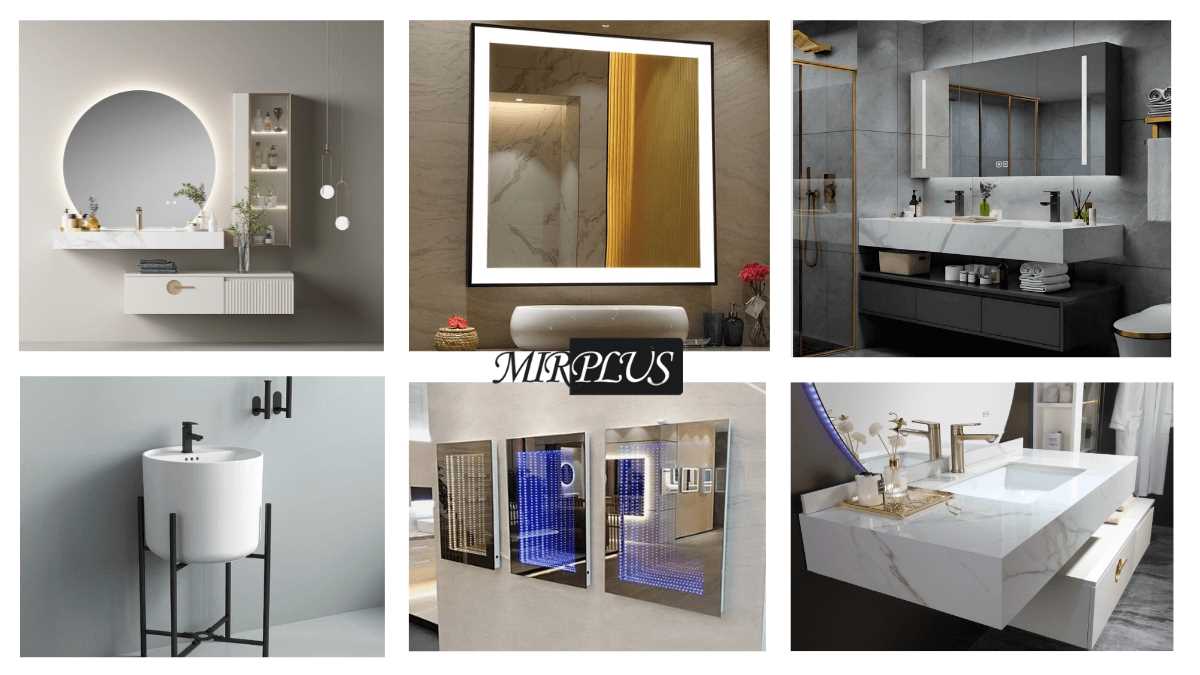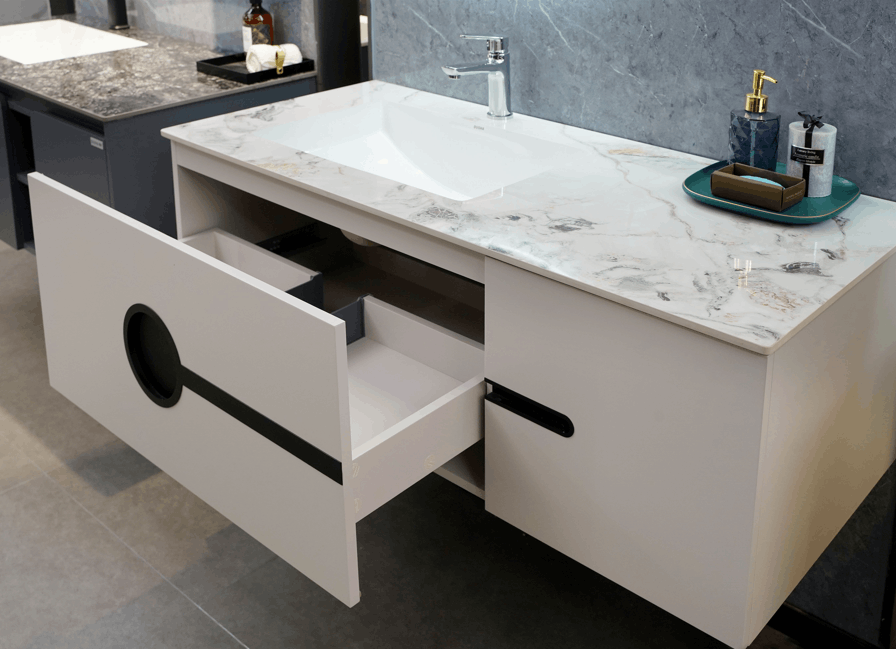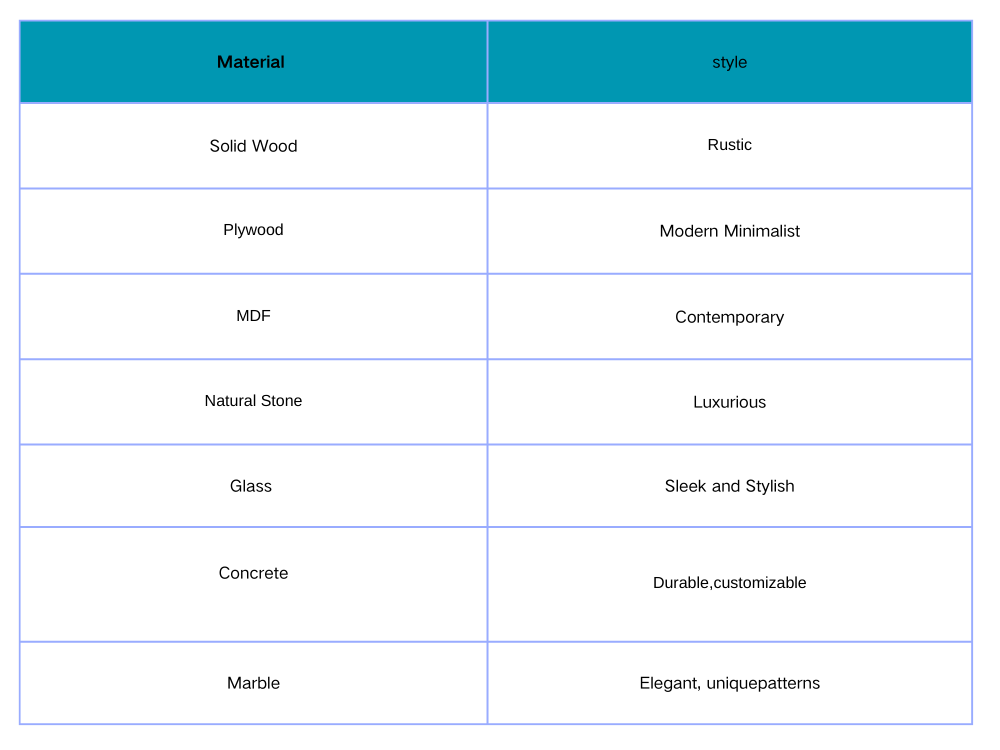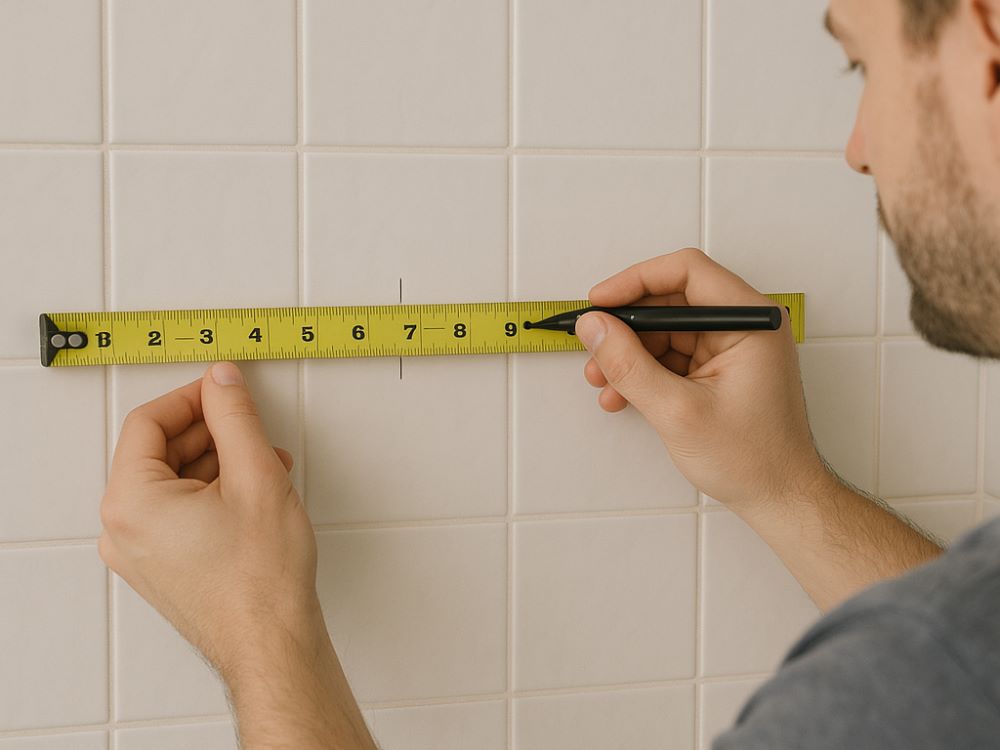
Compared to traditional floor-mounted bathroom vanity, floating vanities offer a sleek, minimalist, and clean aesthetic while saving space, features that make them increasingly popular with customers. If you're planning a new bathroom or renovation and seeking a minimalist modern style, yet unsure which design to choose, floating vanities are undoubtedly one of the hottest trends worth considering.
A floating vanity unit is a sleek and modern solution for your bathroom, as it combines a sink with cabinetry for essential storage while attaching directly to the wall without any floor support.
This design is attracting for people because the vanity cabinet needs ample storage space for all your daily bathroom essentials You’ll appreciate the flexibility in height, allowing customization for comfort. .
By mounting the sink and its components directly onto the wall, the cabinet requires no support structure or base connecting it to the floor or other bathroom elements.
Plus, with various styles available, you can easily find one that suits your personal taste and enhances your bathroom’s overall design.

When considering a floating vanity unit for your bathroom, it's vital to weigh both its advantages and drawbacks.
Floating vanities align with modern design trends, creating a sleek and spacious feel, which make you feel open and have more space to design your styles.
Moreover, Since all fixtures are suspended from the wall, wall-mounted sinks help reduce the buildup of dust, grime, and moisture in the room.
And their height can be adjusted for comfort. As you can see, unlike traditional vanities, floating vanities allow for flexibility in installation height. You can customize the height of the sink according to your needs and preferences, which provides extra comfort for family members of different heights, as well as for those with mobility issues.
However, limited storage may be a concern, as they often lack bottom cabinets. Compared to traditional floor-to-top bathroom vanities, you'll find that wall-mounted designs offer less overall storage space. Storage is concentrated in drawers and compact cabinet units.
Installation can also be tricky; you'll need adequate wall support, which may require reinforcement. Plus, exposed plumbing can detract from the clean aesthetic.
Keep these installation tips in mind to guarantee the best outcome. Ultimately, a floating vanity can elevate your bathroom, but careful consideration is essential for your unique needs.
Are floating vanities truly more expensive than their freestanding counterparts? The answer is depends on your bathroom vanity design, the materials used and the finish.
Generally speaking, floating vanity costs can be higher due to their contemporary design and the advanced installation requirements. You’ll often find that these vanities require special wall reinforcement, which can increase your bathroom renovation expenses.
But the final cost is more likely depending on your choice of vanity styles and vanity colors and finishes.
The quality of materials used, additional functions adding or more special styles design and so on, all of them are affecting the final cost.
Ultimately, it’s essential to weigh the costs against the value they bring to your bathroom. You’ll want to choose what aligns best with your style and budget.
Floating vanities have gradually become a popular choice for modern bathroom design. They offer a stylish aesthetic, save space, and are ideal for those who favour minimalist styles. The variety of designs and materials available provides users with a range of unique visual options.
Understanding the different styles and materials available in advance can help you select the right vanity to enhance both the bathroom's aesthetics and functionality.

Wood has become a favored material for floating bathroom cabinets, offering both warmth and elegance to modern spaces. Its versatility allows you to choose from various wood finishes, enhancing the aesthetic appeal of your bathroom.
Solid wood creates an atmosphere that connects people with nature and experience relaxation. The unique grain patterns found in different types of wood reflect the passage of time and the changes of life.
For these reasons, solid wood bathroom cabinets are an excellent choice for those who appreciate minimalist design and a clean, natural aesthetic.
Related article: the ultimate guide to choose bathroom vanity wood types/
While exploring options for floating bathroom cabinets, concrete countertops stand out as a stylish and durable choice.
With a variety of concrete finishes available, you can achieve a sleek, modern look that fits your personal aesthetic. Its unique texture allows for endless customization, whether you prefer a polished or matte finish. Plus, unlike traditional materials, concrete can withstand moisture and resist damage, ensuring your vanity stays pristine for years to come.

Marble also is a timeless choice for floating bathroom cabinets, offering both elegance and durability. When considering marble for your vanity, you'll find several key benefits:
However, be mindful of marble maintenance. Regular sealing helps protect against stains and etching, while gentle cleaners will keep its surface pristine.
When designing your floating bathroom cabinet, Except for popular styles and materials can considerably impact your space’s overall aesthetic and functionality here are also have other design elements affecting.
For color schemes, think about how light or dark tones affect your bathroom's ambiance. Light hues, like soft whites or pale greys, create an airy feel, while bold blacks or deep navy can add dramatic flair.
Mixing textures, such as pairing a sleek cabinet with a natural stone countertop, can enhance visual interest.
Ultimately, select combinations that resonate with your personal style while ensuring practicality and sustainability in your design choices.
Related article: Bathroom Vanity Ideas in 2025: 11 Trends You Need to Know
When you search bathroom vanity online, you will also see bathroom sinks on the result. They are have some same points but not exactly act the same. While floating vanity units provide a stylish and space-efficient solution for your bathroom, understanding the difference between bathroom sinks and vanities is important for making informed design choices.
A bathroom sink is simply the basin used for washing, available in various sink styles like undermount, vessel, or pedestal. In contrast, a bathroom vanity combines the sink with cabinetry, offering essential storage solutions for toiletries and linens.
Keep in mind, when selecting a bathroom vanity, it's important to choose a sink that complements its style. For example, if you want a modern bathroom cabinet, you should choose a contemporary sink.
Related article: https://mirplusbath.com/best-bathroom-sink-types-styles/
Selecting the ideal material and style for your bathroom vanity can greatly influence the overall aesthetic and functionality of your space. Consider both vanity aesthetics and practical storage solutions. When choosing, think about the existing decor and your personal taste. Here’s a quick guide to help you decide:

How do you guarantee your floating vanity is securely installed? Proper floating vanity installation is vital for safety and aesthetics. Here’s how to ascertain its stability:
Ensure your floating vanity is securely installed for safety and aesthetics by checking wall support and anchoring it properly.
In addition to ensuring the wall's load-bearing capacity, consider the sink's plumbing placement and whether the cabinet dimensions are appropriate. Want to knowing more about how to install, you could check our previous article, step by step showing you the guide.
After ensuring your floating vanity is securely installed, you might wonder about the ideal height for bathroom vanities.
Standard vanity heights typically range from 30 to 36 inches, with 32 inches being the most common. This height suits most users comfortably, allowing for easy access to sinks and countertops.
However, you might consider adjustable vanity options if your household has varying heights or specific needs. These allow for customization, ensuring everyone can use the vanity comfortably.
Keep in mind that a higher vanity might work well for taller individuals, while a lower height can benefit children or those with mobility issues.

When considering the best option for your bathroom, you might wonder if floating vanities truly outshine their freestanding counterparts. Both have unique features, but floating vanities offer distinct advantages:
Furthermore, freestanding vanities come with drawbacks, such as limited design flexibility and more cumbersome cleaning.
Ultimately, your choice depends on your bathroom's layout and your personal style preferences. Embrace the floating vanity benefits if you prioritize modern design and space efficiency!
Choosing your bathroom vanity size is like finding the perfect puzzle piece. Measure your bathroom dimensions, consider different vanity styles, and guarantee it complements your space without overwhelming it. Balance functionality and aesthetics for your ideal fit.
Yes, floating vanities can support heavy sinks or countertops, but guarantee the wall's structural integrity. Check the sink weight capacity and choose sturdy countertop materials like granite or quartz for best durability and support.
To keep your floating vanity sparkling like morning dew, follow these cleaning tips: regularly wipe surfaces with a gentle cleaner, and pay attention to material care; it’ll guarantee durability and maintain that sleek, modern vibe.
Yes, you’ll find floating vanities with space-saving designs perfect for small bathrooms. These units offer various installation options, allowing you to maximize your space while maintaining style and functionality. Choose wisely for your needs!
Installing a floating vanity's like orchestrating a symphony; it requires precision. You can tackle it yourself, but consider installation tips and DIY considerations. Verify your wall's sturdy enough to support the weight, ensuring a harmonious outcome.
In the end, whether you choose a floating or freestanding vanity, each has its perks and drawbacks. Think of it like choosing between a sleek sports car and a reliable SUV; it all depends on your needs and style. Floating vanities save space and look modern, while freestanding options offer more storage. Whichever you pick, make sure it suits your bathroom's design and your daily routine. Happy renovating!
Uncover a realm of opportunities.

Hi, I’m Emmy, a bathroom design enthusiast. My company Mirplus, backed by a team of professional designers, is dedicated to helping people select the perfect bathroom cabinets. I hope my articles can be helpful to you when choosing bathroom products in the future.
Copyright 2022 - All Mirplusbath